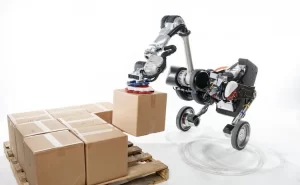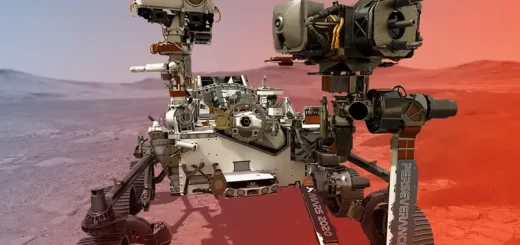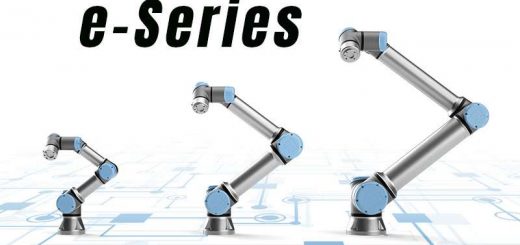How to use Logistic robots and What types of robots are used in warehouses?
Logistic robots can keep track of stock levels and move items between storage areas and picking zones as needed, They are autonomous drones used in warehouses and storage facilities to move goods around. They improve efficiency and accuracy in warehouses by automating repetitive tasks.
Logistic robots
Logistic robots are essentially autonomous drones used in warehouses and storage facilities to move stuff around. They can also be found in other places, like farms or retail stores. They can also be found in other settings, though warehouses are a common application, There are two main types:
- Mobile robots are also known as Automated Guided Vehicles (AGVs). They follow predefined paths along the floor to move things from one place to another. Think of them as little self-driving cars for your warehouse.
- Robotic arms are used for picking things up and sorting them, often from bins or conveyor belts.
The main benefit of logistic robots is that they automate tasks that would otherwise be done by people. This can save businesses a lot of money on labor costs, and it can also help to improve efficiency and accuracy. For instance, robots don’t get tired or need breaks, so they can work for longer stretches than humans.
What is the use of Logistic robots?
Logistic robots can improve warehouse and storage facility operations by automating several tasks:
Their primary function is to move items around the facility. This can involve moving pallets of goods, boxes, individual items, or raw materials depending on the robot’s design. They can transport these items between storage areas, loading docks, and assembly lines. This translates to faster order fulfillment, better inventory control, and lower operating costs.
Logistic robots can be integrated with warehouse management systems to pick and pack orders. They can retrieve the necessary items from storage and deliver them to a designated packing station. they can sort incoming or outgoing items based on size, weight, or other criteria.
By keeping track of items as they are moved, logistic robots can provide real-time data on inventory levels. They offer better stock control and reduce the risk of stockouts. By automating tasks that might involve heavy lifting or operating machinery, logistic robots can help to create a safer working environment for human employees.
Automating tasks with logistic robots frees up human workers for other tasks that require more skill or judgment. This can lead to significant improvements in overall warehouse efficiency. Unlike human workers, logistic robots can operate continuously, 24 hours a day, 7 days a week. This can help to improve throughput and reduce turnaround times.
Importance of Logistic Robots
Autonomous Mobile Robots (AMRs) can adapt to changing warehouse layouts and don’t require fixed tracks like traditional AGVs. They can work tirelessly, 24/7, completing tasks faster and more consistently than humans. This leads to significant gains in overall warehouse throughput, This translates to quicker order fulfillment and the ability to handle higher volumes.
Robots can handle heavy loads and operate in hazardous environments, reducing the risk of injuries for human workers. Unlike humans who can get tired or make mistakes, robots perform tasks with high precision, reducing errors in picking, packing, and inventory management.
While there’s an initial investment, robots can bring down long-term operational costs by reducing labor needs and improving efficiency. Logistic robots are programmed for specific tasks, minimizing errors that can occur with manual labor like picking or sorting items.
Risks of Logistic Robots
Logistic robots rely on software and proper maintenance to function. Any technical issues can disrupt operations. The cost of purchasing and implementing robotic systems can be significant, especially for smaller businesses.
As automation increases, there’s a concern that logistic robots could lead to job losses in the warehousing sector. While robots excel at repetitive tasks, they may struggle to adapt to unexpected situations or handle delicate items. However, new roles may emerge for robot maintenance and supervision.
Robots are designed for specific tasks and may not be adaptable to highly varied or non-routine situations. While AMR robots can improve safety in some ways, proper safety protocols and infrastructure are needed to ensure they operate safely around humans.
You can subscribe to Science Online on YouTube from this link: Science Online
You can download Science Online application on Google Play from this link: Science Online Apps on Google Play
Logistic robots advantages and disadvantages and What is the use of robotics in shipping logistics?
SCARA robot applications, What is a SCARA robot used for? and How many axis is a SCARA robot?
Serial Robots review, advantages, disadvantages and what can serial robots do?
Collaborative robot arm (cobot robots) applications, uses, advantages and disadvantages
Automation in manufacturing uses, advantages and disadvantages
Industrial robot (Auto industry) uses, advantages and disadvantages




